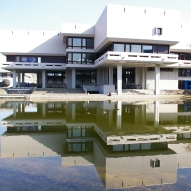 ; Schliemann, C. ; Stelljes, M. ; Balleisen, L. ; Maschmeyer, G. ; Grüneisen, A. ; Eimermacher, H. ; Giagounidis, A. ; Rasche, H. ; Hehlmann, R. ; Lengfelder, E. ; Thiel, E. ; Reichle, A. ; Aul, C. ; Ludwig, W.-D. ; Kern, W. ; Haferlach, T. ; Köpcke, W. ; Görlich, D. ; Sauerland, M. C. ; Heinecke, A. ; Wörmann, B. J. ; Hiddemann, W. ; Büchner, T.
; Schliemann, C. ; Stelljes, M. ; Balleisen, L. ; Maschmeyer, G. ; Grüneisen, A. ; Eimermacher, H. ; Giagounidis, A. ; Rasche, H. ; Hehlmann, R. ; Lengfelder, E. ; Thiel, E. ; Reichle, A. ; Aul, C. ; Ludwig, W.-D. ; Kern, W. ; Haferlach, T. ; Köpcke, W. ; Görlich, D. ; Sauerland, M. C. ; Heinecke, A. ; Wörmann, B. J. ; Hiddemann, W. ; Büchner, T. | Dokumentenart: | Artikel | ||||
|---|---|---|---|---|---|
| Titel eines Journals oder einer Zeitschrift: | Leukemia | ||||
| Verlag: | NATURE PUBLISHING GROUP | ||||
| Ort der Veröffentlichung: | LONDON | ||||
| Band: | 30 | ||||
| Nummer des Zeitschriftenheftes oder des Kapitels: | 6 | ||||
| Seitenbereich: | S. 1230-1236 | ||||
| Datum: | 2016 | ||||
| Institutionen: | Medizin > Lehrstuhl für Innere Medizin III (Hämatologie und Internistische Onkologie) | ||||
| Identifikationsnummer: |
| ||||
| Stichwörter / Keywords: | BONE-MARROW-TRANSPLANTATION; STEM-CELL TRANSPLANTATION; ACUTE MYELOGENOUS LEUKEMIA; COLONY-STIMULATING FACTOR; HIGH-DOSE CYTARABINE; 1ST REMISSION; POSTREMISSION THERAPY; CHEMOTHERAPY; TRIAL; RECOMMENDATIONS; | ||||
| Dewey-Dezimal-Klassifikation: | 600 Technik, Medizin, angewandte Wissenschaften > 610 Medizin | ||||
| Status: | Veröffentlicht | ||||
| Begutachtet: | Ja, diese Version wurde begutachtet | ||||
| An der Universität Regensburg entstanden: | Ja | ||||
| Dokumenten-ID: | 42167 |
 Web of Science
Web of ScienceZusammenfassung
We randomized 3375 adults with newly diagnosed acute myeloid leukemia (AML) or high-risk myelodysplastic syndrome to test whether increasingly intensive chemotherapies assigned at study-entry and analyzed on an intent-to-treat basis improved outcomes. In total, 1529 subjects <60 years were randomized to receive: (1) a first course of induction therapy with high-dose cytarabine and mitoxantrone ...

Zusammenfassung
We randomized 3375 adults with newly diagnosed acute myeloid leukemia (AML) or high-risk myelodysplastic syndrome to test whether increasingly intensive chemotherapies assigned at study-entry and analyzed on an intent-to-treat basis improved outcomes. In total, 1529 subjects <60 years were randomized to receive: (1) a first course of induction therapy with high-dose cytarabine and mitoxantrone (HAM) or with standard-dose cytarabine, daunorubicin and 6-thioguanine (TAD) followed by a second course of HAM; (2) granulocyte-colony stimulating factor (G-CSF) or no G-CSF before induction and consolidation courses; and (3) high-dose therapy and an autotransplant or maintenance chemotherapy. In total, 1846 subjects. 60 years were randomized to receive: (1) a first induction course of HAM or TAD and second induction course of HAM (if they had bone marrow blasts >= 5% after the first course); and (2) G-CSF or no G-CSF as above. Median follow-up was 7.4 years (range, 1 day to 14.7 years). Five-year event-free survivals (EFSs) for subjects receiving a first induction course of HAM vs TAD were 17% (95% confidence interval, 15, 18%) vs 16% (95% confidence interval 14, 18%; P = 0.719). Five-year EFSs for subjects randomized to receive or not receive G-CSF were 19% (95% confidence interval 16, 21%) vs 16% (95% confidence interval 14, 19%; P = 0.266). Five-year relapse-free survivals (RFSs) for subjects <60 years receiving an autotransplant vs maintenance therapy were 43% (95% confidence interval 40, 47%) vs 40 (95% confidence interval 35, 44%; P = 0.535). Many subjects never achieved pre-specified landmarks and consequently did not receive their assigned therapies. These data indicate the limited impact of more intensive therapies on outcomes of adults with AML. Moreover, none of the more intensive therapies we tested improved 5-year EFS, RFS or any other outcomes.
Metadaten zuletzt geändert: 11 Dez 2020 06:59



 Altmetric
Altmetric